Bus lanes are defined by use of road markings and signs that inform road users which vehicles are permitted to use bus lanes. Along with buses, legislation typically permits mini buses, licensed taxi drivers, motorcycle and cyclists to use bus lanes.
Unless the bus lane is in use 24 hours each day, other unauthorised vehicle may be permitted to use a bus lane outside of the lanes hours of operation (see below).
Understanding the various bus lane, bus stop rules and signs for buses is essential for passing the theory test and practical driving test. Furthermore, it’s also important for those with a full driving licence, to understand their meanings to ensure a Penalty Charge Notice isn’t issued and received by the offending driver.
Detailed below are the most frequently seen regulatory signs for motorists entering an area with a bus route and bus lanes. Also covered are bus stop regulation signs and road markings.
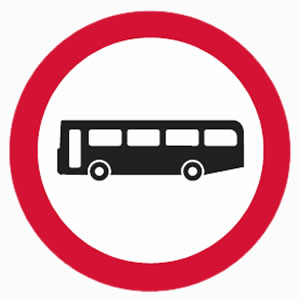
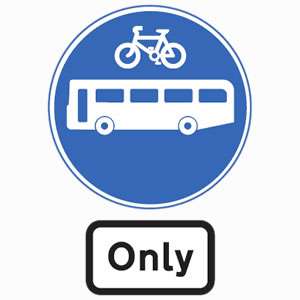
Regulatory bus signs
Circular road signs give orders. Those surrounded by a red ring are mostly prohibitive. The regulatory white sign with a red ring is prohibiting local buses or vehicles that are designed to carry 8 or more passengers. See order road signs for further regulatory road signs.
The blue sign whilst still mandatory provides instruction by informing road user that a particular route is for buses and pedal cyclists only. See blue road signs for further information on signs that provide instruction.
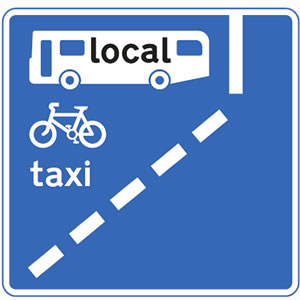
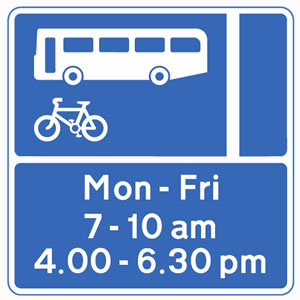
Driving in Bus Lanes
Where a bus lane starts, it will often have a sign to inform road users of who is permitted to use the lane and its times of operation. Bus lane signs where the bus symbol contains the word ‘local’ such as the sign to the right is to be used by buses that run a local service only. Where the word ‘local’ is not shown, the lane may be used by any vehicles that is designed to carry 8 people or more.
When Can You Drive in Bus Lanes
Other road users are permitted to use a bus lane outside its hours of operation. If the hours of operation are not show, the bus lane is in operation 24 hours a day. Hours of operation are shown on the sign. In the example of the blue sign detailing times, you may use the bus lane from 10 am to 4 pm and again from 6.30 pm onward.
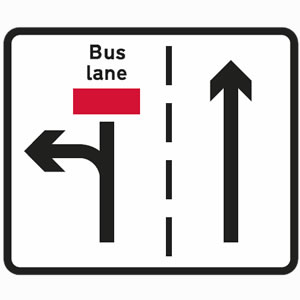
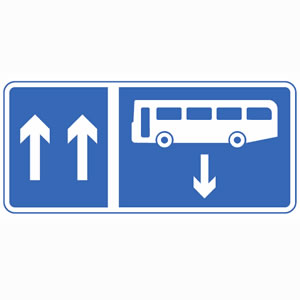
White road signs such as the ‘Traffic turn left only’ sign offer information to road users. See white road signs for further information. This sign allows for motorists to turn left where a bus lane temporarily stops. Bus lane markings displays an example of where this sign may be used.
The blue bus lane sign with the two upwards arrows indicates a contra-flow bus lane. The two upwards arrows indicates the number of traffic lanes available. See contraflow bus and cycle lanes for further information on how contraflow systems work.
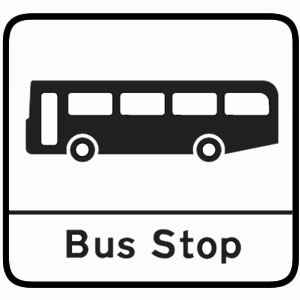
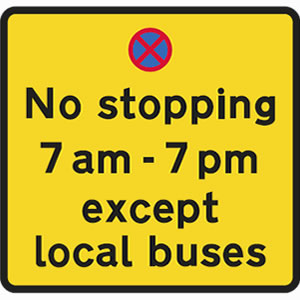
Bus stop signs
The white bus stop signs are used to advise other road users that buses stop here. This sign is advisory only and does not possess any legal enforcement.
Yellow signs that often accompany the white signs contain the no stopping regulatory sign. See no stopping (Clearway) and no waiting signs. These signs are used to inform motorists that it’s illegal to stop here between the times shown.
Bus Lane Fines
Unauthorised drivers that use bus lanes within the hours of operation face being fined by local councils. Fines within London is typically around £130, fines outside of London are usually less at around £60 to £70 depending on location. Motorists are offered a reduced amount if paid within a time period specified on the penalty charge notice (PCN).
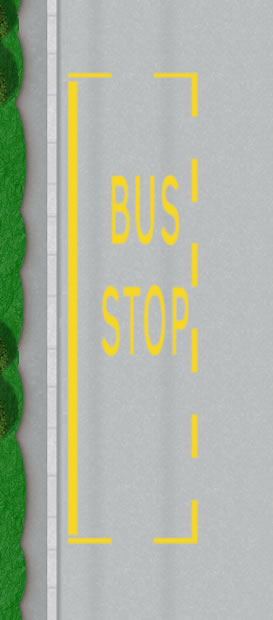
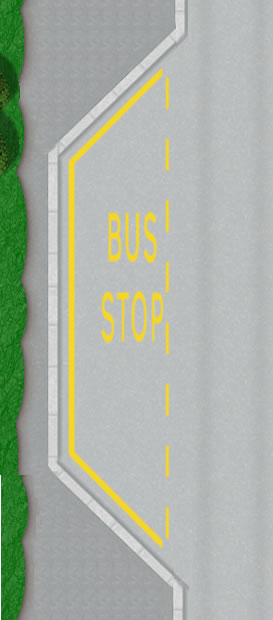
Bus stop road markings
Bus stops that have parking or stopping restrictions will have a sign at the side of the road close to the bus stop showing which restrictions are in place. Along with signs, legislative road markings such as yellow lines are used to deter drivers from stopping or parking.
The broad continuous yellow line at the edge of the carriageway means that other vehicles are prohibited from stopping. The diagram to the far right illustrates a bus lane in a lay-by. Motorists that stop even momentarily may find themselves issued with a penalty charge notice.
Allowing Buses Priority
Always allow buses priority if it’s safe to do so. If for example a bus is signalling to exit the bus stop and merge with traffic, slow down and allow the bus to move out.
Take the Road Sign Quiz
Once you have finished studying the various bus route sign and other signs for buses, take the theory test road sign test quiz to test your knowledge.
OTHER TYPES OF ROAD SIGNS
- Warning Road Signs
- Order Road Signs
- Blue road signs
- Brown Road Signs
- White Road Signs
- Speed Limit Signs
- Direction Signs
- Low Bridge Signs
- Parking and No Parking Signs
- Bus Lane and Bus Stops
- Road Works and Temporary Signs
- Road Markings and Lines
- Road Sign Theory Test Quiz
- Road Markings Theory Test Quiz




If the bus markings are not well marked and no sign
Indicating restricting parking times, does this mean you can park your car there?
Thanks
Hi Ron,
The bus lane should have a sign stating its purpose and times that it’s in use, or if it displays no time, then it’s in constant use. If the bus lane or signs are not being well maintained, it wont prevent you from receiving a penalty charge notice, but it will allow appeal the ticket and to possibly have it waived.